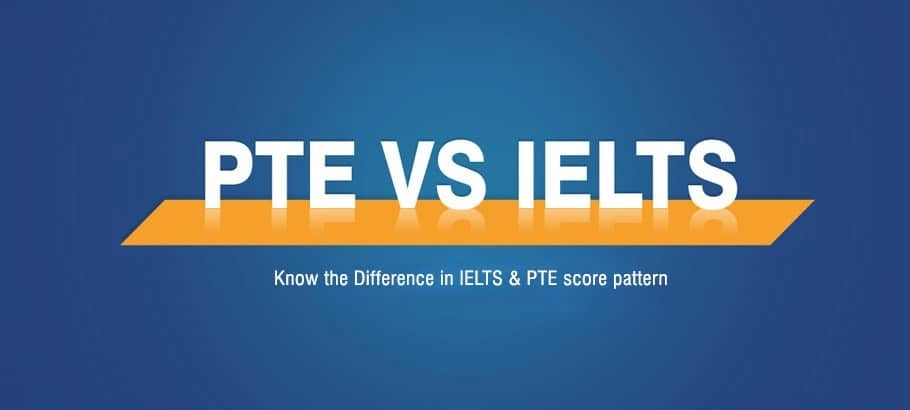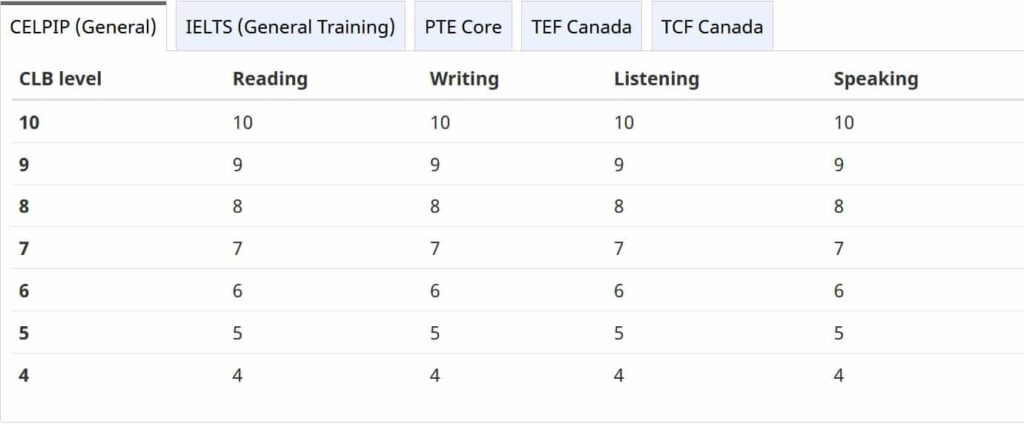
The Pearson Test of English (PTE) Core stands out among IRCC-accepted language tests, offering a modern and efficient evaluation of language proficiency. Its computer-based format ensures a comprehensive assessment of listening, reading, writing, and speaking skills within a single three-hour session. PTE Core’s unique automated scoring system, aligned with the CEFR, ensures objective and consistent results, distinguishing it from traditional pen-and-paper tests.
When compared to IELTS, PTE Core showcases flexibility in test scheduling, allowing candidates to choose from multiple dates throughout the year. The contrast in test structures and scoring criteria emphasizes PTE Core’s distinct advantages, including a faster score release and a global recognition that extends beyond regional variations.
Against CELPIP, PTE Core’s global focus makes it an attractive choice for individuals seeking international opportunities. The writing module differences highlight the breadth of assessment offered by PTE Core.
Compared to TOEFL iBT, PTE Core’s single-session structure and rapid score release contribute to its appeal, especially for those with tight timelines. While both tests utilize automated scoring, PTE Core’s efficiency in delivering results within two business days stands out.
In conclusion, the PTE Core emerges as a compelling option, blending technological innovation, global recognition, and efficiency in a way that caters to the diverse needs of language test-takers in the context of Canadian immigration.
1. Introduction
Language proficiency tests play a crucial role in the immigration process, especially for individuals aspiring to move to Canada. The Immigration, Refugees, and Citizenship Canada (IRCC) accepts several language tests as proof of language proficiency. This article delves into a detailed comparison between the PTE Core and other IRCC-accepted language tests.
2. Overview of Language Tests Accepted by IRCC

Before delving into the specifics of the PTE Core, it’s essential to understand the landscape of language tests accepted by the IRCC. Among the commonly recognized tests are the International English Language Testing System (IELTS), Canadian English Language Proficiency Index Program (CELPIP), and Test of English as a Foreign Language (TOEFL) iBT.
3. Understanding PTE Score

3.1 Test Format
The PTE Core, or the Pearson Test of English, is a computer-based language proficiency test that evaluates a test-taker’s abilities in listening, reading, writing, and speaking. Unlike traditional pen-and-paper tests, PTE Core leverages advanced technology to provide a comprehensive assessment of language skills.
3.2 Scoring System
PTE Core employs a unique automated scoring system, ensuring objectivity and consistency. Scores range from 10 to 90, with increments of one point. The test evaluates proficiency on a scale that aligns with the Common European Framework of Reference for Languages (CEFR).
4. Comparing PTE Score to IELTS

4.1 Test Structure
While both PTE Core and IELTS assess the same language skills, their test structures differ significantly. PTE Core incorporates a single three-hour session, covering all four skills. In contrast, IELTS consists of separate modules for listening, reading, writing, and speaking, often conducted on different days.
4.2 Scoring Criteria
The scoring criteria for PTE Core and IELTS are distinct. PTE Core employs an automated system, eliminating subjectivity, while IELTS involves human examiners for the speaking and writing modules. This distinction can impact the perception of fairness and accuracy among test-takers.
4.3 Flexibility in Test Scheduling
PTE Core offers greater flexibility in scheduling tests, with multiple test dates available throughout the year. IELTS, on the other hand, may have limited test dates in some locations, potentially causing delays for test-takers.
5. PTE Score vs CELPIP

5.1 Test Format
CELPIP, like PTE Core, is a fully computerized test. However, CELPIP focuses on Canadian English and incorporates everyday language scenarios. PTE Core, being a more globally recognized test, assesses a broader range of English language skills.
5.2 Speaking Module Comparison
Both PTE Core and CELPIP evaluate speaking skills through various tasks. PTE Core assesses pronunciation, fluency, and content, while CELPIP emphasizes real-life communication skills.
5.3 Writing Module Comparison
The writing modules in PTE Core and CELPIP differ in their approaches. PTE Core includes essay writing and summarization tasks, whereas CELPIP assesses writing abilities through tasks like email composition and essay writing.
6. TOEFL iBT vs PTE Score

6.1 Test Sections
TOEFL iBT consists of four sections – reading, listening, speaking, and writing. PTE Core covers the same areas but is structured as a single, continuous three-hour session.
6.2 Scoring System
Both tests employ automated scoring systems, providing efficiency and objectivity. However, the score ranges and criteria may vary, making direct comparisons challenging.
6.3 Test Availability
TOEFL iBT may have limited test dates in some regions, potentially causing scheduling challenges for test-takers. PTE Core’s frequent test availability contributes to its attractiveness among individuals with tight timelines.
7. Advantages of PTE Score

7.1 Fast Results
One significant advantage of PTE Core is its rapid score release. Test-takers typically receive their scores within two business days, facilitating quicker completion of immigration applications.
7.2 Computer-Based Testing
PTE Core’s computer-based format allows for a seamless testing experience, leveraging technology for efficient evaluation and prompt results.
7.3 Score Validity Period
PTE Core scores are valid for up to two years, offering test-takers a reasonable timeframe to use their results for immigration purposes.
8. Limitations of PTE Score

8.1 Limited Test Centers
While PTE Core has a global presence, the number of test centers may be limited in some regions, requiring test-takers to travel greater distances for examination.
8.2 Less Familiarity among Test-Takers
PTE Core may be less familiar to some test-takers compared to more established tests like IELTS or TOEFL iBT. Familiarity can impact a candidate’s comfort level and performance.
9. Conclusion
In conclusion, the choice between PTE Core and other IRCC-accepted language tests depends on various factors, including individual preferences, test format preferences, and test center availability. Each test has its strengths and limitations, and test-takers should carefully consider these aspects to make an informed decision that aligns with their goals and timelines. As language proficiency is a crucial aspect of the immigration process, selecting the most suitable test is paramount for a successful application.





